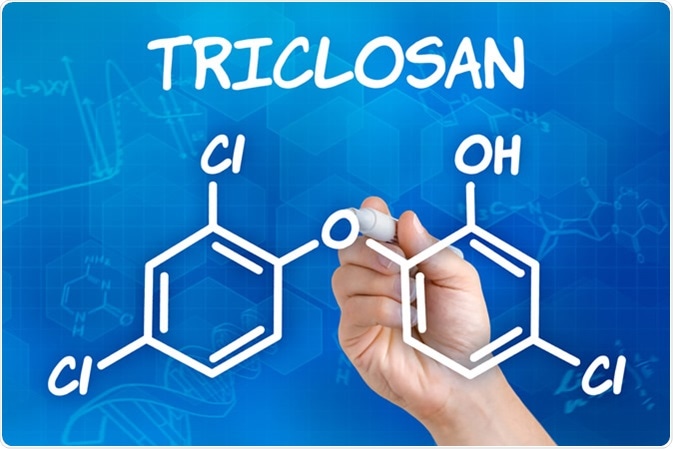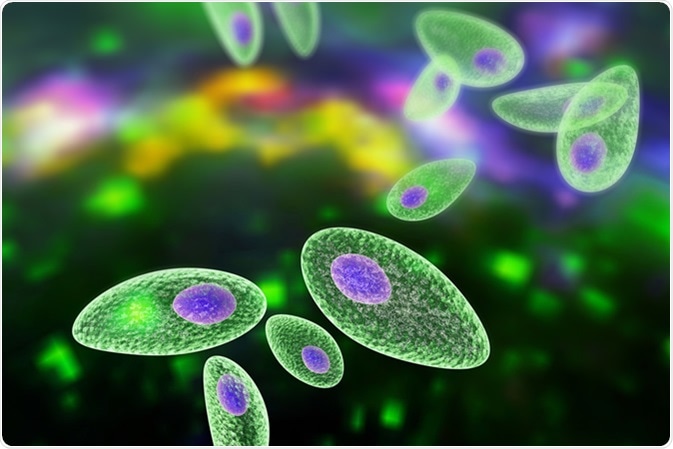On September 9, 2016, the United States Food and Drug Administration (FDA) banned the incorporation of triclosan and 18 other antimicrobial chemicals from household soap products and the next year prevented companies from using triclosan in over-the-counter health care antiseptic products without premarket review.
These decisions were made after manufacturers failed to provide the FDA conclusive proof that triclosan was safe and effective in light of research suggesting concern over hormonal effect and the potential long-term public health risk triclosan use presents.
History
When triclosan, which has the chemical name 5-chloro-2-(2,4-dichlorophenoxy)phenol, was originally developed about 20 years ago, it was believed to be a nonionic broad-spectrum antimicrobial agent with a favorable safety profile. As a result, this chemical was rapidly incorporated into many different personal care products including deodorant soaps, antiperspirants shower gels, antibacterial hand soaps and soap bars, dishwashing liquids and toothpaste.

Chemical formula of Triclosan. Image Credit: Zerbor / Shutterstock
Most of these personal care products will contain anywhere from 0.1% to 03% of triclosan. Triclosan has also been incorporated into other consumer products like kitchen utensils, children’s toys, bedding, clothes, fabrics and trash bags that are not regulated by the FDA.
Shortly after its introduction into commercial products in 1998, approximately 1,500 tons of triclosan were produced, of which 350 and 450 tons were distributed throughout Europe and the United States, respectively.
Triclosan’s Mechanism of Action
The antimicrobial activity of triclosan has been shown to inhibit the growth of several different types of bacterial and fungal species. Even inhibiting the growth of the Apicomplexa parasite species Plasmodium falciparum, which causes cerebral malaria, and Toxoplasma gondii the causative agent of toxoplasmosis.

Toxoplasma gondii. Protozoan which is transmitted from cats and other animals and causes toxoplasmosis especially dangerous for pregnant women. 3D illustration Credit: Kateryna Kon / Shutterstock
When used at low concentrations, triclosan can successfully inhibit the growth of microorganisms; however, higher concentrations of this chemical will directly kill microorganisms.
Triclosan functions as an antimicrobial agent by impairing the production of bacterial lipids. More specifically, it blocks the active site of a bacterial enzyme known as enoyl-acyl carrier protein reductase. Since humans lack this enzyme, triclosan has been generally accepted as harmless to human health.
Triclosan and Antibiotic Resistance
Researchers estimate that the rapid spread of antibiotic resistance around the world will cause the death of one person every 3 seconds by the year 2050. This alarming threat to the public’s health is attributed to the widespread overuse and misuse of antibiotics, which has led to an increase in drug-resistant bacteria.
The exposure of bacteria to triclosan can not only increase the resistance of these species to triclosan through a variety of different mechanisms but can also exhibit cross-resistance to other clinically important antibiotics. Research has suggested that the widespread use of biocidal agents like triclosan can potentially increase the global spread of antibiotic resistance. The antimicrobial resistance associated with triclosan has been attributed to either modification and/or amplification of the target by this chemical.
Environmental Persistence
Since many of the products that contain triclosan are applied to the external surfaces of the human body, this chemical is typically released directly into domestic wastewater systems until it reaches local wastewater treatment plants. Triclosan is a poorly soluble hydrocarbon chemical that can accumulate in various areas of the environment including agricultural soils and surface waters.
Although triclosan is not considered to be as toxic as other pollutants like organochlorines its occurrence in wastewaters, biosolids, aquatic and terrestrial environments remains a concern. Furthermore, triclosan exhibits certain physico-chemical characteristics, including its variable log Kow and volatilization values, that makes it more difficult to effectively remove from the environment. The environmental concerns surrounding triclosan led this chemical to be declared a Priority Existing Chemical for full assessment under the Industrial Chemicals (Notification and Assessment Act) in Australia.
The Toxicity of Triclosan
When triclosan enters the human body, it is rapidly metabolized to glucuronide and sulfate conjugates, which can be eliminated from the body rapidly through urination. While the speed of this elimination limits triclosan’s toxicity to humans, its direct exposure to the skin has been associated with some contact dermatitis and skin irritation reactions.
Studies have found triclosan in human breast milk, urine and blood plasma. One study identified high levels of triclosan in approximately 60% of the human milk samples that were tested, thereby indicated the high absorption capabilities of this chemical. There are several ongoing studies investigating triclosan potential impact on human health but to date there is currently no conclusive evidence to show that triclosan is carcinogenic, mutagenic or can disturb the development of an embryo or fetus .
The Future of Antimicrobials
For several decades, researchers have become increasingly concerned by the contribution disinfectant agents make to the rise in global bacterial resistance. As the threat of antibiotic resistance increases, it is important that consumers carefully consider which antimicrobial products, if any, they use and how they may impact their own health and others.
In order to further preserve public health. federal agencies have a responsibility to monitor companies that simply replace chemicals like triclosan with “safer” products that still have a documented history of promoting cross-resistance to antibiotics.
Sources
- Bhargava, H. N., & Leonard, P. A. (1996). Triclosan: Applications and safety. American Journal of Infection Control 24(3); 209-218. DOI: 10.1016/S0196-6553(96)90017-6.
- McNamara, P. J., & Levy, S. B. (2016). Triclosan: an Instructive Tale. Antimicrobial Agents and Chemotherapy 60(12); 7015-7016. DOI: 10.1128/AAC.02105-16.
- Dhillon, G. S., Kaur, S., Pulicharla, R., Brar, S. K., Cledón, M., Verma, M., et al. (2015). Triclosan: current status, occurrence, environmental risks and bioaccumulation potential. International Journal of Environmental Research and Public Health, 12(5), 5657–5684. DOI: 10.3390/ijerph120505657.
- Federal Drug Administration (FDA). 5 things to know about triclosan (updated May 16, 2019) www.fda.gov/consumers/consumer-updates/5-things-know-about-triclosan
- Federal Drug Administration (FDA). FDA issues final rule on safety and effectiveness of antibacterial soaps (September 02, 2016). www.fda.gov/.../fda-issues-final-rule-safety-and-effectiveness-antibacterial-soaps
Further Reading
Last Updated: Jul 2, 2019